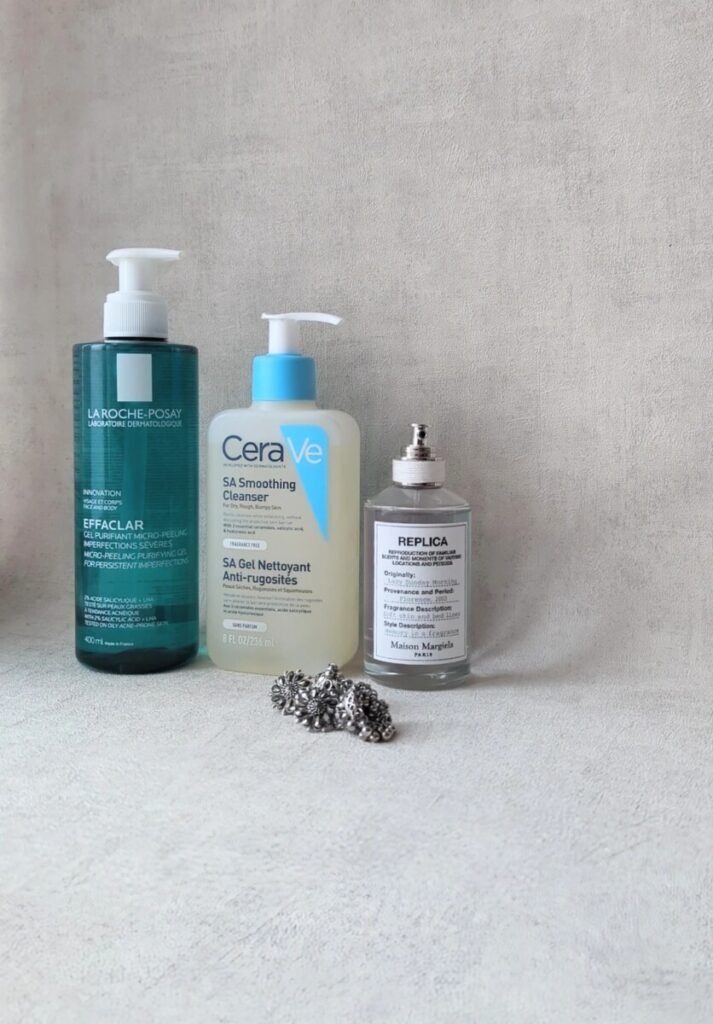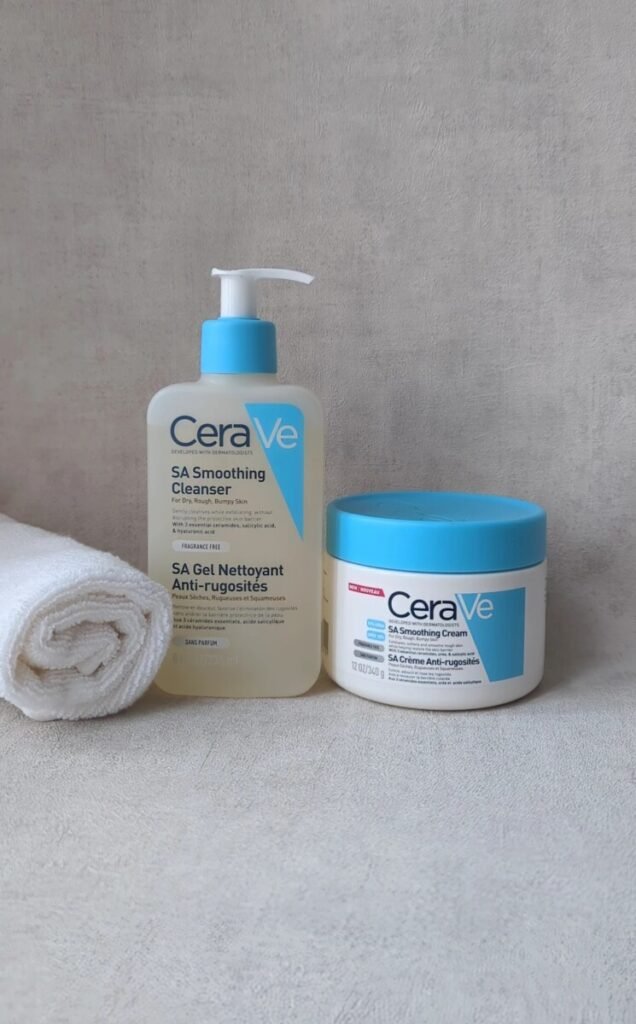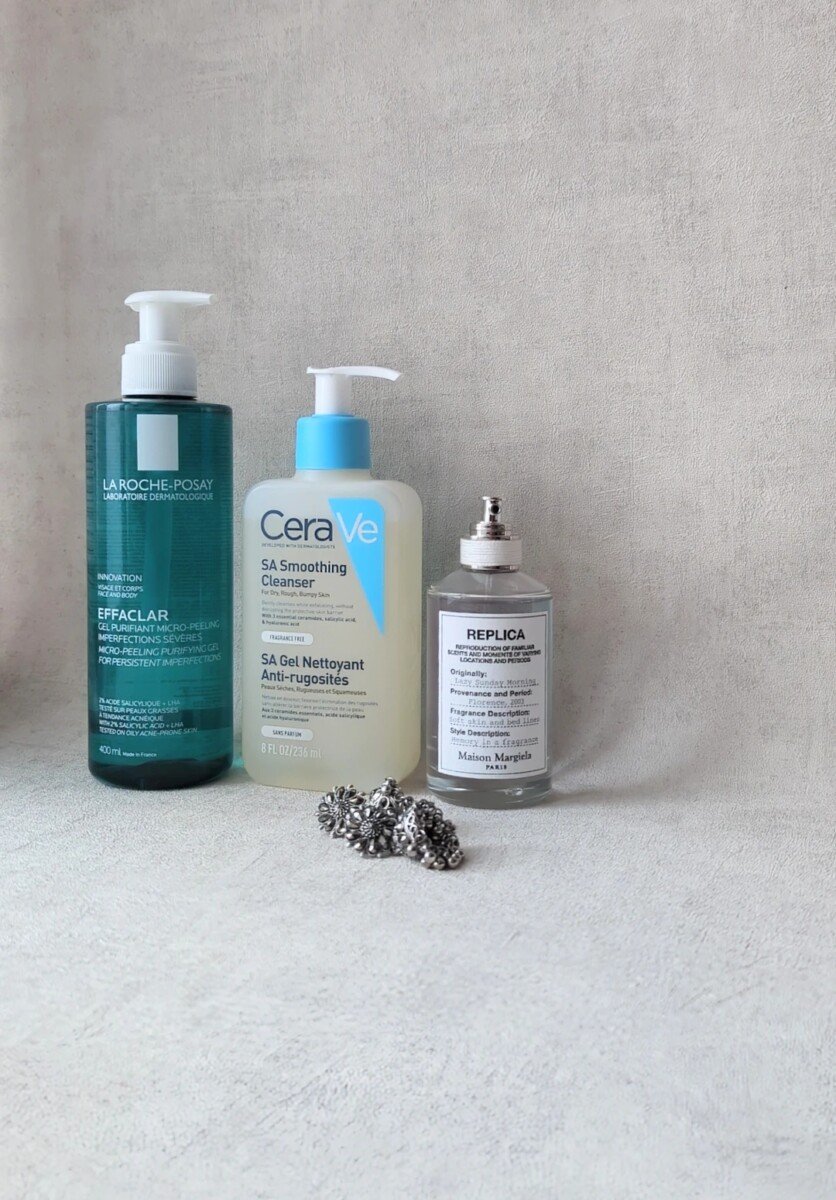Salicylic acid is a staple in exfoliation and acne treatments, but did you know that its effects on your face and body differ? Despite being the same ingredient, the needs of your body and face skin differ, which may impact how salicylic acid performs. Let’s examine the key distinctions and how to apply it effectively to each.

1. Skin Structure & Thickness
- Face: Think of your face like fine silk and your body like hardy denim—both beautiful, but with very different care instructions. Indian facial skin, particularly with melanin-rich undertones, tends to show irritation and pigmentation more easily. That’s why exfoliating with care matters. The overuse of strong exfoliants on the face can lead to irritation, dryness, and barrier damage.
- Body: The skin on our body, especially areas like the back, shoulders, chest, and thighs, is thicker and less sensitive. This means it can tolerate higher concentrations of salicylic acid more easily.
Use lower concentrations (0.5–2%) on your face and up to 2% or even stronger formulations on your body, especially in leave-on treatments.
Grandma would say: Always follow exfoliation with something cooling—be it rose water or aloe straight from the garden.
2. Skin Concerns Treated
- Face: Hormonal acne, clogged pores, whiteheads, and blackheads are common issues especially for someone like me who comes from Indian roots. Salicylic acid reduces irritation and dissolves oil within pores.
- Body: I’ve seen how salicylic acid transforms those tiny, stubborn bumps on the arms into baby-smooth skin. And if bacne has ever made you second-guess that backless dress… yep, this one’s your ally. It tackles body acne (bacne), keratosis pilaris/strawberry skin, ingrown hairs, and even rough texture on elbows or buttocks.
For smoother body results, combine salicylic acid with moisturisers that include lactic or urea acid.
Growing up, Mum’s “skin brightening scrub” was a mix of besan (gram flour), haldi (turmeric), and a squeeze of lemon—a ritual, not just a recipe.

3. Formulation Differences
- Facial products: Serums, toners, spot treatments, and gel-based cleansers are typically lighter. They are often pH-balanced for the delicate face.
- Body products: Body washes, sprays, and lotions with richer textures cover more surface regions and possibly contain additional active ingredients like niacinamide or glycolic acid. You can find a range of exfoliating body washes for clearer skin that are formulated to target breakouts, rough texture, and congestion effectively.
If your skin is prone to uneven tone, layering salicylic acid with ingredients like liquorice root or sandalwood can work wonders.
4. Frequency of Use
- Face: Start out slowly—two to three times a week. For skin that is oily or prone to acne, daily use is feasible but should be closely monitored.
- Body: Can usually tolerate daily use unless you have very sensitive skin.
And no matter how cloudy the British sky is—wear that sunscreen!
5. Risk of Over-Exfoliation
- Face: We’ve all overdone it—chasing glow and ending up red and regretful. If your skin feels like it just ran a marathon, scale back and bring in your skin’s best friend: ceramides.
- Body: Less prone to over-exfoliation, but dryness can still occur if not balanced with hydration.
Use a barrier-repairing moisturiser or body cream with ceramides to keep the skin resilient. Growing up, I used to reach for Mum’s kitchen remedy: a mix of malai (milk cream) and honey, stored in tiny steel bowls in the fridge.
Final thoughts:
Salicylic acid is an incredibly effective exfoliant and acne fighter—but your face and body don’t need to be treated the same. They are two very different canvases—each with its own story, rhythm, and needs. To get the most out of salicylic acid—glowing, clearer, smoother skin—use the right product at the right strength and balance it with hydration. That’s where real glow begins.
Until next time, Ashh xo
*This is a sponsored post. Any opinions shared are my own and unbiased.




Leave a Reply